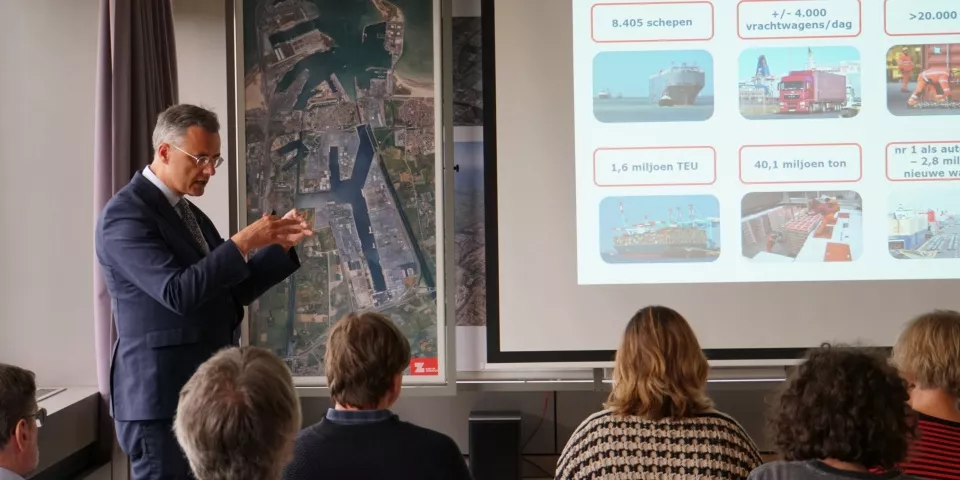Link with the hinterland: promotion of sustainable connections
The port of Zeebrugge is doing well, but is also faced with some major challenges, says Joachim Coens, managing director of ‘Maatschappij van de Brugse Zeehaven’ (MBZ).
“We need to promote sustainable hinterland connections further. To this end, we have developed an intermodal route planner. The accessibility of inland waterways should be optimised, e.g. by making the Ghent–Bruges canal accessible for vessels of up to 2,500 tonnes and by relaxing the rules for estuarine navigation."
"If we want to continue to be a world player in deep-sea shipping (Editor's Note: ocean-going vessels coming from outside Europe), we need to have the courage to question our infrastructure. Replacing the Visartsluis lock is required in the short term.”
“We are also facing geopolitical challenges, including Brexit. Right from the start, the port of Zeebrugge has had a strong link with the United Kingdom as a trade partner. Together with various partners, we have created the digital customs platform RX/SeaPort to make the port of Zeebrugge Brexit proof.”

Sustainability is always at the back of the port authorities’ mind too. “As part of our Clean Port Strategy, we have taken several initiatives focused on LNG, wind energy and hydrogen energy. We’ve noticed that a lot of ships have made the transition to LNG. Being a natural gas hub, the port of Zeebrugge can serve as a catalyst in this regard. We hope to charge ships with green shore power in the near future.”